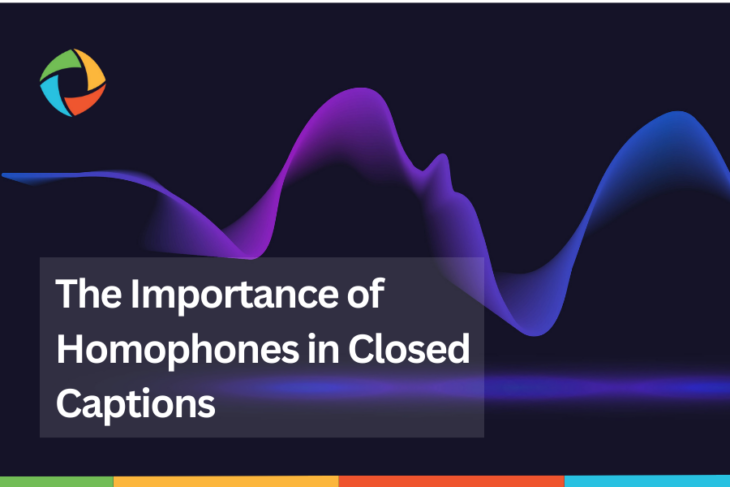If you’re familiar with closed captions, you may have noticed that they occasionally feature errors, particularly when it comes to homophones. Homophones are words that sound the same but are spelled differently and have different meanings. Inaccurate use of homophones in closed captions can lead to confusion for viewers and misinterpretation of the intended message. In this post, we’ll explore the importance of accurate homophone usage in closed captions and how to ensure their proper usage.
What are homophones?
As mentioned earlier, homophones are words that sound the same but have different spellings and meanings. Examples include “there,” “their,” and “they’re,” as well as “to,” “too,” and “two.” Other examples include “bare” and “bear,” “four” and “for,” and “flower” and “flour.” Homophones can be tricky to navigate, even for native speakers, but they’re essential to understanding when it comes to closed captions.
The significance of homophones
Closed captions help individuals who are deaf or hard of hearing to access video content. They rely on captions to understand the message, making accurate homophone usage crucial for their comprehension. Misuse of homophones can lead to confusion and misunderstanding of the intended message, which defeats the purpose of closed captions in the first place.
In addition to aiding individuals who are deaf or hard of hearing, closed captions are also useful for individuals who speak different languages or are in noisy environments. Accurate homophone usage benefits these individuals as well, allowing them to understand the content more clearly and without confusion.
How to ensure accurate homophone usage in closed captions
One of the best ways to ensure accurate homophone usage in closed captions is to hire a professional closed captioning service that employs trained and experienced transcriptionists. These experts understand English language nuances and can guarantee accurate, clear, and easy-to-understand captions, even with homophones.
Be cautious, because relying on automated transcription services may not be 100% accurate. Errors in homophone usage could confuse viewers. To ensure accuracy, use human transcriptionists who can catch any homophone errors missed by automated technology, creating accessible closed captions.
Accurate homophone usage in closed captions is critical to ensure that individuals who are deaf or hard of hearing can access video content and that all viewers can understand the intended message. To ensure accurate homophone usage, consider using a professional closed captioning service. Contact us today for a free quote on our closed captioning services and ensure that your video content is accessible to all.

Jake Drown
Jake Drown is our Vice President and oversees our day-to-day operations. Jake thrives on solving our customer’s problems - if you’re stuck at a roadblock, he’s the one you need to call. As a jack-of-all-trades, you never know what you will find Jake doing on the weekends! He and his family are seasoned travelers and can be found anywhere from a mountain top, a forest, a beach, or even a corn field!


